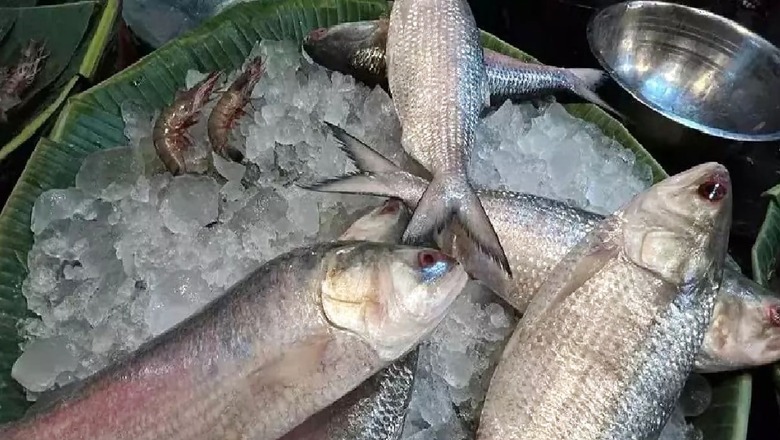
views
Hilsa fish is embedded within the culture of West Bengal and during the rainy season, it becomes difficult to find a Bengali household that is not cooking Hilsa for lunch. However, the availability of this favourite fish of Bengalis is declining gradually. Commercial pressures, environmental degradation, and threats from various interest groups due to human activities like siltation at the estuary mouth of the Hooghly–Bhagirathi River system are obstructing the migration of Hilsa into the estuarine environment. Additionally, the construction of barrages and dams has led to a decline in Hilsa populations in the upper reaches.
Other contributing factors include juvenile fishing, overexploitation of breeding fish, non-compliance with mesh size regulations, ineffective fish passes, habitat loss due to increased water abstraction for irrigation and industrial purposes, pollution, and the impacts of climate change.
Together, these factors have caused a significant decrease in Hilsa production. As availability is low, a class of unscrupulous traders are taking advantage of the supply deficit. Fish similar to Hilsa are being sold as Hilsa fish. Buyers are often deceived into buying fake Hilsa fish from the market.
Chandana, Sardine, Pansa, Khaira, Chowkka, and Sagar Chapila are distinct types of marine fish that resemble Hilsa, but they have notable differences. Generally, they are narrower compared to Hilsa and have larger eyes. Unlike Hilsa, these fish do not carry the characteristic aroma. Chandana Hilsa has less than 30 thoracic spines, the tail fin is also relatively short, the lower jaw is large.
The Khaira fish differs from the Hilsa in several noticeable ways. It has a more pronounced bulge towards the belly compared to the back, giving it a wider and thinner appearance than the Hilsa, which is equally convex and thick on both sides. The Khaira fish also features larger eyes than the Hilsa. In terms of head shape, the Khaira fish typically has a relatively short head with a blunt tip, distinguishing it further from the Hilsa.
Many people may mistake sardine fish for Hilsa. The body of the sardine is thicker and the ventral side is more convex and flat than the dorsal side. Hilsa’s body is laterally thick, the dorsal and ventral sides are almost equally convex. Sardine fish is short in length. The eye shape of sardines is relatively large.




















Comments
0 comment